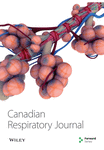The Impact of Nationally Coordinated Pharmacy-Based Asthma Education Intervention
Abstract
OBJECTIVE: To assess the impact of a nationally coordinated pharmacy-based educational intervention on self-management behaviour and markers of asthma control in self-referred patients with asthma.
DESIGN: An asthma clinic day was set up by a national chain of community pharmacies whereby pharmacists used a structured questionnaire to assess asthma control and self-care among self-referred patients with doctor-diagnosed asthma. In a one-on-one counselling session, each patient′s educational needs were identified and the appropriate education offered. A telephone follow-up 30 days later assessed the impact of teaching.
SETTING: Community pharmacies across Canada.
OUTCOME MEASURES: The follow-up questionnaire quantified the number of wheezing episodes or other symptoms per week, the number of night-time awakenings per week, and the frequency of use of reliever and preventive medications.
RESULTS: Of 4080 patients assessed, 22.2% used an inadequate inhaler technique, 16.4% used a short acting beta2-agonist excessively and 21.0% were not using an inhaled corticosteroid daily despite a frequency of symptoms that would suggest that it was needed. Common educational interventions included a review of inhaler technique (41.9%), a recommendation for regular inhaled corticosteroids (31.5%) and a referral to the primary care physician (21.0%). Thirty days after the educational intervention, patients reported significant decreases in the frequency of daytime asthma symptoms, the frequency of nocturnal symptoms and the frequency with which short acting beta2-agonists were used, while reporting significant increases in their use of preventive medication.
CONCLUSIONS: A brief assessment and an educational intervention in the community pharmacy can produce significant short term improvements in patient-reported symptom control and appropriate self-management behaviour.




